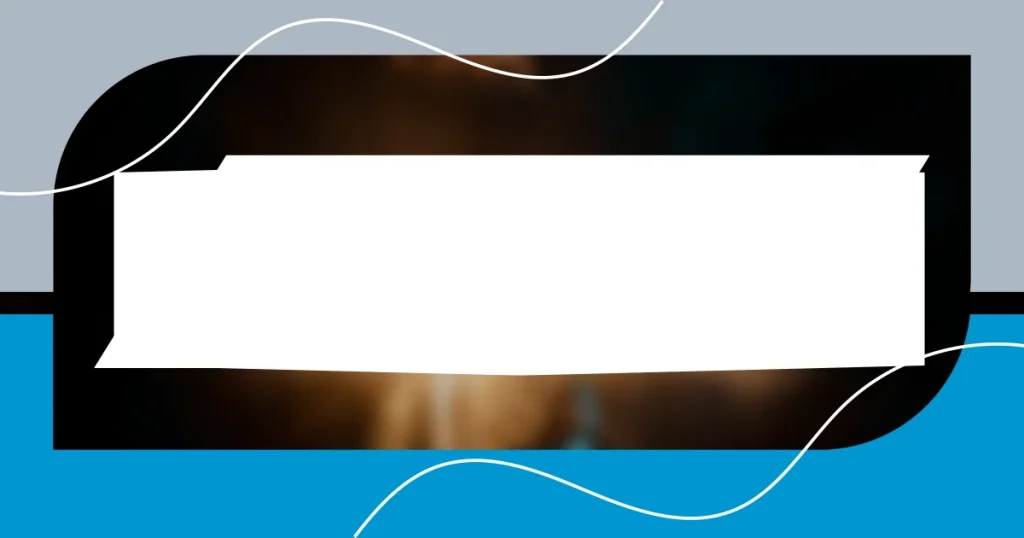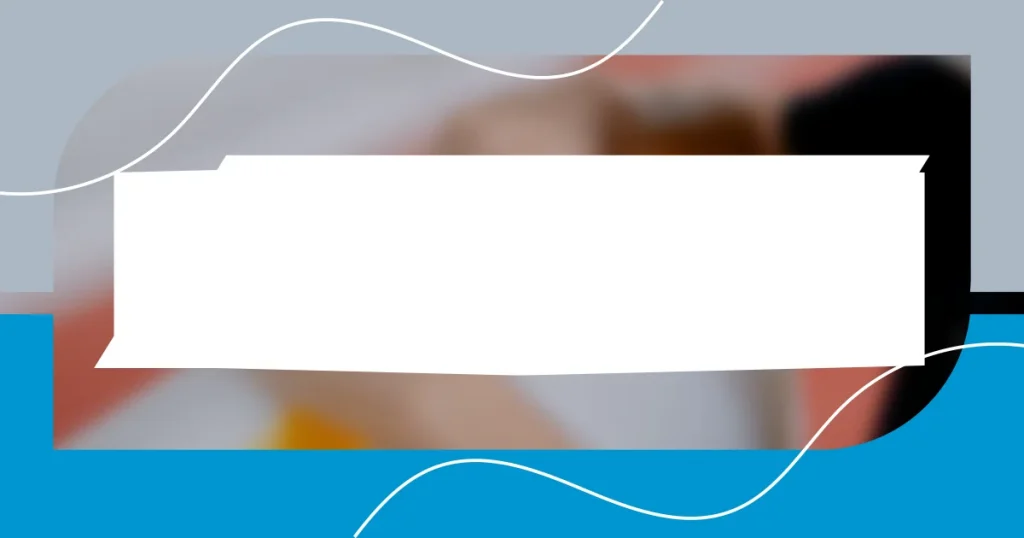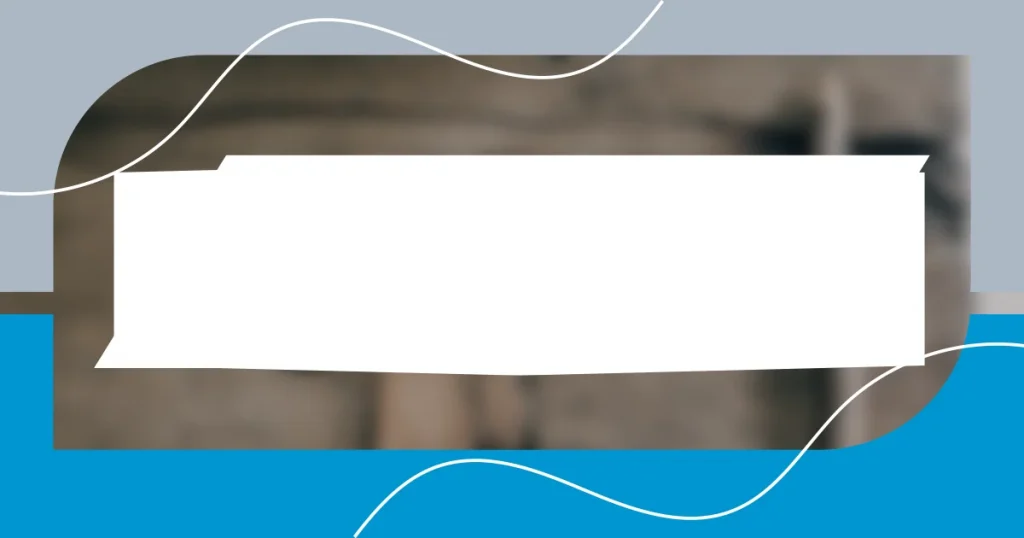Key takeaways:
- Different finishes significantly influence the aesthetic and emotional atmosphere of a space, allowing personal expression and storytelling.
- Using the right tools, such as brushes and sandpaper, is crucial for achieving desirable results when experimenting with finishes.
- Documenting results helps refine techniques and enhances connection to materials, enabling realizations about unexpected outcomes and the importance of choice in design.
Understanding Different Finishes
When exploring finishes, it’s fascinating to see how each one can completely transform a surface. I still remember the first time I tried a matte finish on a piece of furniture; it felt like I was bringing a whole new dimension to the room. Have you ever noticed how a glossy finish can reflect light in intriguing ways?
I often find myself pondering the emotional impact of finishes. For example, a high-gloss finish can make a space feel modern and sleek, while a warm, satin finish invites a sense of comfort and coziness. One time I opted for a satin finish on my kitchen cabinets, and it created an inviting atmosphere that made cooking feel even more enjoyable.
The variety of finishes available can be overwhelming, yet that’s what makes it such an exciting area to experiment with. I still get a thrill when choosing between a textured or smooth surface. Each finish tells a story, doesn’t it? Whether it’s a rustic look or a refined sheen, understanding these nuances allows us to express our unique style and vision in our spaces.
Tools for Experimenting with Finishes
When it comes to experimenting with finishes, having the right tools is crucial. I remember the first time I ventured into applying a varnish—it was a rather messy affair. With just a simple brush in hand, I was surprised at how much control I had over the final look. Using quality brushes or foam applicators can yield dramatically different results. Investing in the right tools really elevates the whole experience.
Equally important are the types of sandpaper you choose. I vividly recall my journey with sanding a table top; I initially underestimated the importance of grit selection. Using too coarse a grit left deep scratches, while a fine grit produced a smooth, inviting surface. It taught me that patience and the right tools play a significant role. This journey of learning is what makes experimenting with finishes truly rewarding.
Lastly, don’t overlook a good spray gun or airbrush for achieving professional results. My first time using a spray gun felt like magic—there’s something exhilarating about an even coat that brings out the richness of the paint or stain. I still recall the awe I felt seeing the vibrant colors come to life on my project. Each tool brings its own vibe to the table, shaping your creative process in unique ways.
| Tool | Purpose |
|---|---|
| Brushes | Apply paints and finishes with control. |
| Sandpaper | Smooth surfaces and prepare for finishing. |
| Spray Gun | Achieve a smooth, even coat. |
Step-by-Step Testing Process
In my step-by-step testing process, I always start with careful planning. I choose a few finishes based on the projects at hand, sketching out my ideas and keeping a journal of what I hope to achieve. I remember when I was trying to decide between a distressed and a glossy finish for my bookshelf; writing it all down helped me visualize the transformation I was aiming for.
- Create a base: Select a sample piece of wood or a small section of the project to test your finishes.
- Layering approach: I often apply multiple layers, starting with a primer if necessary, and then the finish itself.
- Observe affects: After each application, I give it time to dry completely. Sometimes I would get lost in the anticipation, waiting to see how the colors deepened or changed.
- Document results: Keeping a detailed log of what worked and what didn’t allows me to refine my techniques for next time, and honestly, it adds a personal touch to my journey.
As I moved through this process, I made sure to take my time and experiment boldly. For instance, during a testing phase for a metallic paint, I created swatches on different surfaces. It was fascinating to see how the finish looked variations in light. Feeling that sense of discovery made every trial worthwhile.

Analyzing Texture and Appearance
Analyzing texture and appearance can often become a delightful journey. I recall one project where I was experimenting with a matte versus a satin finish on a reclaimed wood table. As I stroked the first coat of satin, I was struck by how the sheen brought out the wood grain, almost as if it was whispering its story to me. It made me appreciate how a simple change in finish could dramatically alter not just the look but the personality of a piece.
Texture plays a vital role, too. During my exploration, I once applied a rough, rustic finish to a bookshelf, aiming for that lived-in charm. But, oh, the surprises! The uneven surface caught light in ways I didn’t anticipate, creating a dance of shadows that gave it life. Have you ever noticed how the feel of a surface can evoke different emotions? Touching that textured finish, I felt a sense of history and warmth, something a sleek, polished surface simply couldn’t replicate.
As I progressed, I discovered the interplay of colors and textures was just as crucial in my testing process. There was a moment when I layered a glossy varnish over a deeply pigmented stain on a chair. Seeing the colors deepen and shimmer was electrifying. It made me wonder: how often do we overlook how finishes can transform not just appearances but our connection to the objects around us? Balancing those textures and tones turned into a personal dialogue, each project teaching me something new and allowing my creativity to flourish.

Combining Finishes for Unique Looks
Combining finishes can unlock a world of unique looks that truly stand out. I remember a dining table project where I decided to pair a soft chalky finish with a high-gloss topcoat. The contrast was astonishing! The matte base exuded an inviting warmth, while the glossy layer caught the light, showcasing the table’s fine details. It’s amazing how two different finishes can elicit such varied reactions and emotions in a single piece.
As I experimented with layered finishes, my confidence grew. One memorable instance was when I used a weathered wood stain under a shimmering metallic glaze on a small accent piece. The result wasn’t just visually captivating; it sparked curiosity. Every guest who encountered it asked, “How did you create that effect?” I found myself sharing the process enthusiastically. Have you ever noticed how combining finishes can transform your conversation pieces into storytellers?
The beauty of mixing finishes lies in the endless possibility it offers. One day, I found myself layering a glossy epoxy resin over a soft, textured paint on a wall feature. The depth created a stunning three-dimensional effect. It made me realize that finishes aren’t just about aesthetics; they’re about expressing individuality. How do you express your creativity? For me, every experiment is a step toward discovering new dimensions of design, and it feels exhilarating to see each unique combination come to life.

Documenting Results and Adjustments
Documenting results is like keeping a personal diary of my experiments. I recall meticulously noting how a matte polyurethane finish dulled the vibrant tones of a painted piece, lessening its initial impact. This was eye-opening for me because it reminded me how documentation isn’t just about tracking progress; it’s about capturing those subtle changes that can inform future projects. Have you ever realized that even slight adjustments can lead to completely different outcomes?
As I adjusted my techniques, I started incorporating before-and-after photographs alongside my notes. The visual comparisons were incredibly revealing. For instance, I painted a side table with an eggshell finish and then switched to a semi-gloss; the brightness it added was dramatic. My logbook served as both a reflection of my evolving skills and a treasure trove of insights I could refer back to. What an invaluable resource! It’s interesting how visual and written documentation can complement each other, providing a fuller picture of the creative journey.
I also learned the importance of noting unexpected outcomes. One time, after applying a wash over an oak surface, I wrote down how it unexpectedly highlighted the wood’s grain patterns. It was almost like an epiphany—I realized that sometimes the best results come from serendipitous moments. This practice not only helped me refine my techniques but also inspired a deeper connection to my material choices. Have you ever felt that connection to your work? For me, it can turn a simple experiment into a profound exploration of creativity.

Finalizing Your Finish Choices
Finalizing your finish choices is like orchestrating the perfect symphony; every element must harmonize. I remember pouring over samples spread out on my workshop table, feeling a mix of excitement and trepidation as I tried to visualize the outcome. It’s fascinating how color and texture can speak volumes, isn’t it? I often ask myself, “Which finish will elevate this piece from ordinary to extraordinary?”
As I navigated through various options, the tactile experience became paramount. I fondly recollect the day I decided to test a natural oil finish on a reclaimed wood bookshelf. The rich, earthy scent filled my workspace and instantly connected me to the wood’s history. That moment prompted me to reflect on how important it is to choose a finish that aligns with both the piece’s story and my personal style. How do you feel when you interact with your materials? For me, it’s all about creating a dialogue between the work and its future.
I’ve also learned that finalizing finishes involves emotional resonance. One time, after much deliberation, I chose a vibrant, high-gloss finish for a playroom table. The joy on my kids’ faces as they played on its bright surface was the ultimate validation. It made me realize that our choices often reflect not just aesthetic preferences but the environment we aim to create. When you finalize your finishes, ask yourself whose story are you telling? In every project, I strive to ensure the finish encapsulates the spirit of the space, making it not just visually appealing, but also emotionally enriching.











